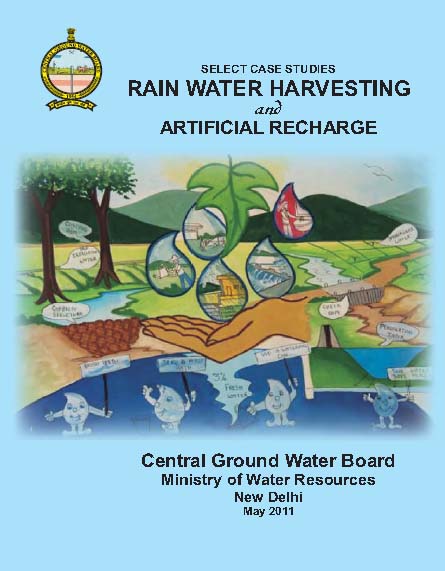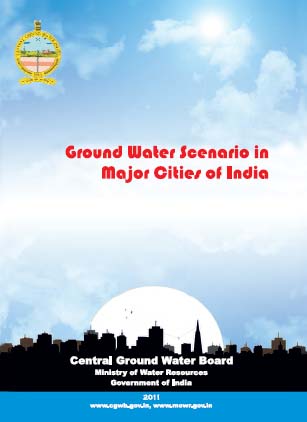Groundwater
Bhoo Jal Sangrah Dohavali (Groundwater recharging - A creation of poems in Hindi) by Awadesh Nema
Posted on 02 Jun, 2011 12:59 PMIt is an innovative version, and has been appreciated in many seminars and national workshops. It gives a logical treatment of mother earth based on human therapy.
For more information, please visit Awadhesh Nema's Blog.
Hkw&ty laxzg nksgkoyh
ty laxzg.k orZeku le; dh lcls cM+h ekax gS A ty dh izR;sd cwan dk laxzg.k vko';d gh ugha cfYd ,d vfuok;Zrk gksrh tk jgh gS A ty laxzg.k dk ;g iz;kl lekt ds izR;sd O;fDr ds }kjk fd;k tkuk pkfg;s A ty laxzg.k gsrq lekt dks tkx`r djus dh rFkk mUgsa blds fofHkUu mik;ksa dks le>kus dh ije vko';drk gS A ;fn lekt dk izR;sd O;fDr ty laxzg.k ds fofHkUu rduhdh rjhdksa ls voxr jgsxk rks og mUgsa vklkuh ls viuk ldsxk vkSj lekt ds fgr esa rFkk Lo;a ds fy;s Hkh ty laxzg.k ds bl ;K esa viuk ;ksxnku ns ldsxk A
Flouride problem in Guttavarepalle village, Madanapalle, Andhra Pradesh - A field report by Arghyam and Outreach
Posted on 31 May, 2011 12:07 PM
Overview
It is surprising that fluoride was found even in surface water bodies like ponds, because fluoride is generally found in deep aquifers. Fluoride is a naturally occurring mineral in the deeper layers of rock beneath the earth's surface, so it was unusual to find it at such high levels even in surface water sources, leading to the conclusion that intensive agriculture in the area has spread the fluoride to the surface.
Discussion on: Groundwater use - The looming crisis and the way forward, 28th May, 2011, Indian Social Institute, New Delhi
Posted on 23 May, 2011 03:31 PMOrganizers:
- Delhi Platform
- Jalsamvaad
- HRLU (Human Rights and Law Unit) - Indian Social Institute
- South Asian Dialogues on Ecological Democracy (SADED)
Venue: Room 304, Indian Social Institute, Lodhi Road (Nearest Metro Station: Jor Bagh), New Delhi
New research centre for applied groundwater research at the University of Guelph in Ontario Canada, dives into uncharted waters
Posted on 19 May, 2011 10:42 PMHow exactly do contaminants spread underground? How much urban stress can an aquifer withstand?
With the need for clean fresh water growing daily, finding answers to those questions is a top priority for researchers at G360, the new Centre for Applied Groundwater Research at the University of Guelph in Ontario, Canada.
Case studies on rainwater harvesting and artificial recharge – A compilation by Central Ground Water Board
Posted on 17 May, 2011 09:13 PM Groundwater caters to the demand of ever growing domestic, agricultural and industrial sector of the country and is being indiscriminately exploited by several users. On the other hand, rapid urbanization and land use changes has resulted in reduced natural infiltration or recharge of aquifers.
Groundwater caters to the demand of ever growing domestic, agricultural and industrial sector of the country and is being indiscriminately exploited by several users. On the other hand, rapid urbanization and land use changes has resulted in reduced natural infiltration or recharge of aquifers.
This has led to various problems related to quantity and quality and issues like the decline in water levels, depletion of groundwater resource and quality deterioration. There is thus an imperative need for augmenting the valuable groundwater resource. Artificial recharge and roof top rainwater harvesting is one such method that can revive this precious resource. Several traditional and scientifically proven artificial recharge and rainwater harvesting techniques have been adopted in different parts of the country. These structures have proven to be viable option for augmenting the groundwater aquifers by making use of surplus surface runoff.
Groundwater management in Andhra Pradesh - Time to address real issues – A report by Institute for Resource Analysis and Policy
Posted on 17 May, 2011 02:16 PMWith 49 per cent of the total irrigation from groundwater, the state of Andhra Pradesh accounts for 5.3 per cent of the net groundwater irrigated area in the country.
The real picture of arsenic pollution in West Bengal, India
Posted on 17 May, 2011 11:34 AMArsenic poisoning in these districts is a serious environmental problem and is affecting the health of millions of people in the State. The problem has been aggravated with increase in groundwater exploitation leading to leaching of arsenic located in upper layers of sediment down into the deep aquifers.
During my visits to these districts, I have had dreary experiences -
Groundwater scenario in major cities of India – A report by Central Ground Water Board
Posted on 17 May, 2011 10:35 AM It covers varying groundwater scenarios in the country including the highly developed metros, the hilly region, the coastal cities, the cities tapping unconsolidated and hard rock aquifers. The report briefly describes the administrative set up, status of water supply and demand, groundwater scenario, feasibility of rainwater harvesting and groundwater development strategy.
It covers varying groundwater scenarios in the country including the highly developed metros, the hilly region, the coastal cities, the cities tapping unconsolidated and hard rock aquifers. The report briefly describes the administrative set up, status of water supply and demand, groundwater scenario, feasibility of rainwater harvesting and groundwater development strategy.
It is an updated version of an earlier report on “Groundwater in urban environment in India” (2000). Since then, groundwater regime, urban demography and water demand have changed enormously. This report will form a scientific base for an in-depth understanding of urban groundwater system including aquifer geometry, water level behavior and groundwater quality. The possibility of artificial recharge to rejuvenate the urban aquifers has also been discussed.
Agencies monitoring groundwater level in various parts of India in 2011 A list by the Central Ground Water Board
Posted on 16 May, 2011 07:26 PM
The CGWB has been monitoring groundwater levels on a quarterly basis during January, April/ May, August and November through a network of about 15000 observation wells located all over the country. This data is used for assessment of groundwater resources and changes in the regime consequent to various development and management activities.
Pampered views and parrot talks – In the cause of well irrigation in India – A paper by Institute for Resource Analysis and Policy
Posted on 15 May, 2011 06:14 PMIt is widely held that surface irrigation is becoming increasingly irrelevant in India’s irrigation landscape in spite of increased investments, and therefore future investments in irrigation should be diverted for well irrigation.




